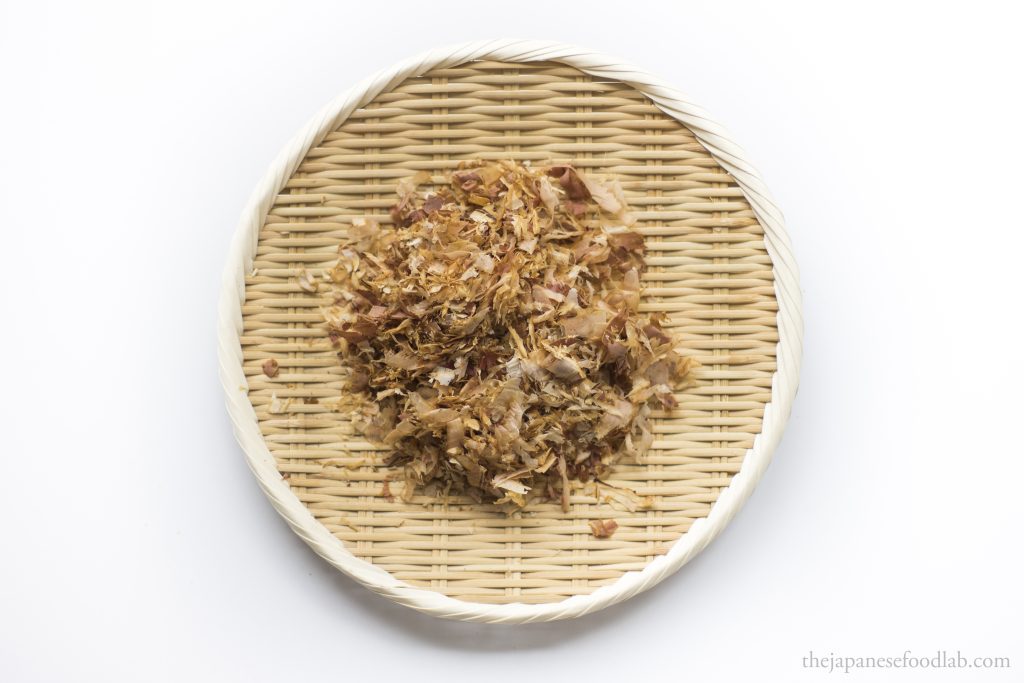This article is part of our series on other kinds of bushi. We recommend reading our article on how katsuobushi is made, how it is shaved, the different parts of katsuobushi and the different kinds of katsuobushi to better understand the terminology used here.

Urumebushi (うるめ節) is made from dried urume iwashi (ウルメイワシ), which are different from iwashi sardines used in sushi. Characterized by their large eyes, they’re better known in English as round herring (Etrumeus micropus).
Given their much smaller size compared to bonito, mackerel and tuna, urumebushi is almost always made up to the arabushi stage, but never processed into honkarebushi. This is because it is difficult to grow mold evenly on a small fish, yielding a product with inconsistent taste.
Their small size also means that it’s easier for them to not be gutted, fileted or have their heads removed before being boiled and smoked. This means that while they stand in the middle of the spectrum from light to rich, if the heads and guts are not removed before they are shaved and the dashi stock is made, the resulting stock can have quite a heavy fishy taste.
Urume are also commonly dried into niboshi, with the main difference being that after boiling, urume niboshi is dried whilst urumebushi is smoked.
Just like Soudabushi, the highest quality urumebushi is made from fish that have just the right amount of fat. This can be judged by inspecting the belly of the urumebushi, with very cracked or peeling skin indicating that the fish was too fatty. If dried properly, the urumebushi should also be stiff and break with a snap. If it is able to bend without breaking, there’s a chance that not enough moisture was removed during the smoking process, or that the fish has been left for too long in the open and has absorbed the ambient humidity.
Whilst possible to buy whole urumebushi, most people prefer to purchase pre-shaved urumebushi as it’s easier to use. This is because if used whole, most people opt to use urume niboshi instead. Most urumebushi is thin shaved using a machine after the heads and guts are removed. As one might expect, the heads do not shave well and turn to powder, giving the resulting stock a slightly bitter taste. Though harder to find, you can sometimes buy thick shaved urumebushi for boiling as well.
They’re also sometimes crushed and ground up into a powder for use as toppings, particularly on ramen or tsukemen.